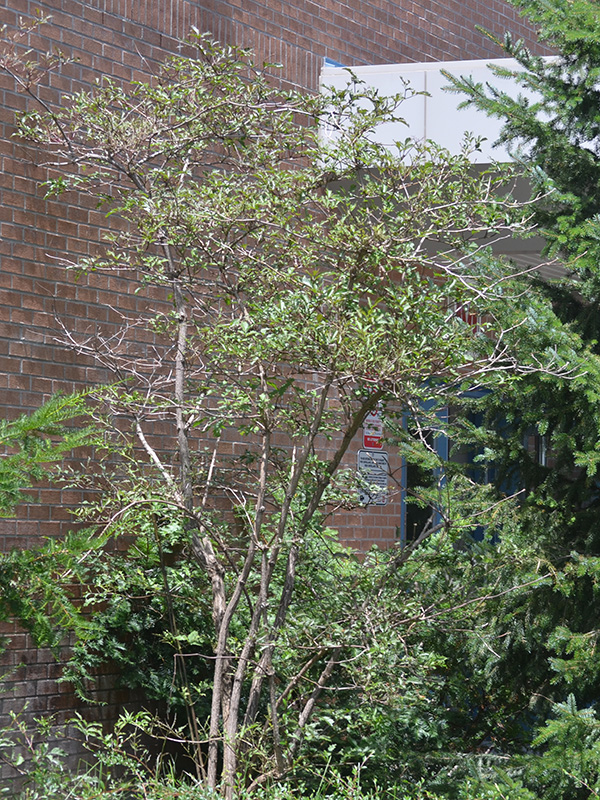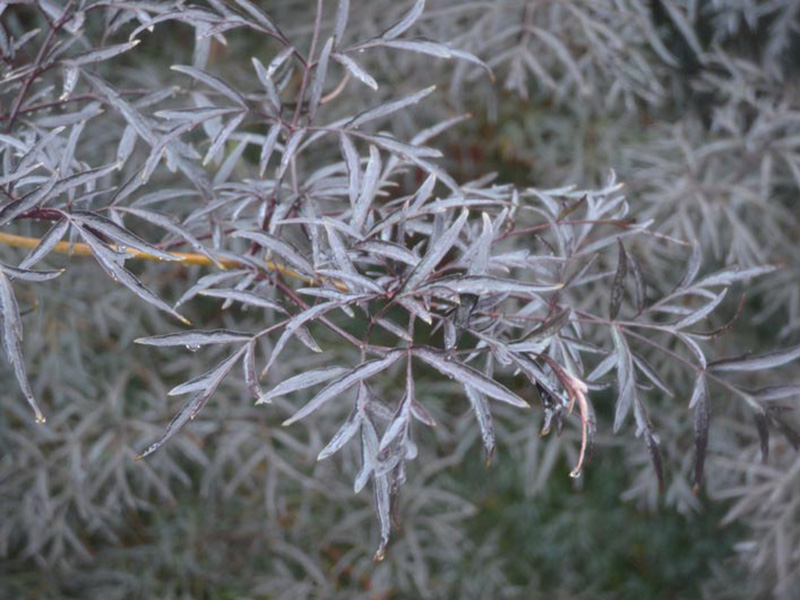
Woody > Sambucus > Sambucus nigra > Sambucus nigra f. porphyrophylla 'Gerda'
Sambucus nigra
f. porphyrophylla 'Gerda'
Gerda Black Beauty Sambucus, Gerda Elderberry
Origin: It is native to Europe and North America. It is most commonly found in Scotland and along the British Isles.
| Family |
| Adoxaceae (Caprifoliaceae) |
| Genus |
| Sambucus |
| Species |
| nigra |
| Cultivar |
| 'Gerda' |
| Category |
| Woody |
| Type |
| Shrub (deciduous) |
| Forma |
| porphyrophylla |
| Synonyms |
| Sambucus nigra 'Black Beauty' |
| Pronunciation |
| USDA Hardiness Zone |
| 5a - 7b |
| Canadian Hardiness Zone |
| 2a - 8a |
| RHS Hardiness Zone |
| H4 - H7 |
| Temperature (°C) |
| -26 - (-15) |
| Temperature (°F) |
| -20 - (-5) |
| Height |
| 36 m |
| Spread |
| 3 - 4.5 m |
Photographs
Description and Growing Information
Flowering Period
| General Description |
| This is a woody shrub that has a dark purple hue and is used in the landscape for its showy flowers. |
| Landscape |
| Used in landscapes as an accent shrub due to its colourful flowers and vibrant fruit. It can also be used as a screen due to its height and thickness. |
| Cultivation |
| Grows well in moist soil and moderate sun. It also thrives in acidic soil. |
| Shape |
| Grows upright and have a canopy spread of about 2.5 m. This plant matures very quickly and doesn't change in shape after fully grown. |
| Growth |
| Fast |
| ID Characteristic |
| Large clusters of dark purple berries and light purple flower clusters. The leaves of the Sambucus are pinate and are usually made up of five to seven leaflets. |
| Pests |
| Spider mites and aphids- which eat away at the plants stems. Minor susceptibility to leaf spots borers and cankers. |
| Habitat |
| Horticultural origin. |
| Bark/Stem Description |
| Smooth and dark purple in colour. Branches are thin and long. The bark has been known to be poisonous to animals. |
| Flower/Leaf Bud Description |
| The buds protrude from the stem and start off a light green and slowly turn a light purple. The buds are ovate and become pointed at the tip. |
| Leaf Description |
| The leaf is pinate with five to seven leaves per stem, being very thin and about half an 2.5 cm wide and 7.5- 10 cm long and dark purple in colour. |
| Flower Description |
| The flowers are light purple and grow in large cymes of about thirty flowers. |
| Fruit Description |
| The fruit is a very small dark purple circular berry formed in large clusters that are edible. |
| Colour Description |
| The colour of the stems and leaves are a dark purple along with the berries. The flowers are light purple with a white tint. |
| Texture Description |
| This plant has a fine texture that does no vary throughout seasons. |
| Notable Specimens |
| The Gardens of Fanshawe College, London, Ontario, Canada. Ridgetown College, Ridgetown, Ontario, Canada. |
| Propagation |
| By softwood and hardwood cuttings. This shrub will usually get pruned due to its thickness. |
| Ethnobotanical Uses (Disclaimer) |
| Elderberries that hang from the tree are most commonly known for there medicinal benefits since they are very high in vitamin A, B and C. The berries are used to combat colds, flus and nasal congestion and are edible and used for jams. |
References
Haymarket Media Group. LTD, Hort Week, July 10, 2008
Mark D. Atkinson and Elaine Atkinson, Sambucus nigra, October 2002 Journal of Ecology, Volume Number 90, Issue 5.



